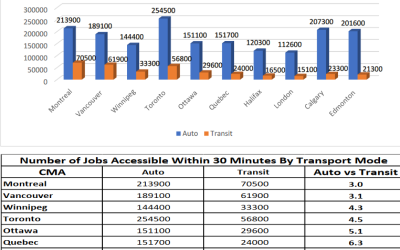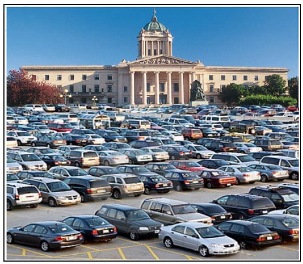
- This chart measures provincial government spending as a percentage of the provincial economy from 1965 to 2000. Because more government spending generally means higher taxes, it is a good proxy for tax levels. In Manitoba particularly, it also generates more external transfers like equalization.
- In 1965, Manitoba had the smallest provincial government in Western Canada as a percentage of the economy, slightly below the Canadian average at 11.5%. By 1975, it had the largest sized provincial government relative to its economy, at 20.4%.
- Over the 1980s, Saskatchewan and Manitoba rapidly increased the size of their provincial governments. In 1991,Saskatchewan topped the chart with the largest proportionate government. By the decade’s close it sharply reduced its government to the second smallest in the West.
- In 2000, Manitoba’s spending as a proportion of GDP, was the highest in Western Canada at almost 24% of its economy, well above the national average of 19.1%, and almost 65% larger than Alberta’s proportion of 14.5%.
- The following two charts measure the growth in size of provincial governments over two periods. Manitoba’s provincial government grew proportionately the most between 1965 and 2000. From 1990 to 2000, when provincial governments as a percentage of GDP were shrinking, Manitoba’s government contracted the least (-9% vs. Sask -29% and Alberta -31%), except for B.C., which expanded (+1%).

OBSERVATIONS:
- If Manitoba’s provincial government spending as a percentage of its economy were at the Canadian average, it would have to reduce its spending by $1.6 billion or increase the size of the economy by $8.6 billion. If it were equivalent to Saskatchewan: a $1.2 billion spending reduction or a $5.6 billion increase in the economy. To match Alberta’s ratio: cut spending by $3.2 billion or increase the economy by $22 billion.
- Many of Manitoba’s policy challenges like low growth, demographic decline and chronic population outflow are tied to the province’s comparatively oversized public sector and its resultant higher tax burdens. Strong evidence suggests a slimmer provincial government would result in more growth.
- Economists estimate that for every ten percent points of government spending there is a corresponding one percent decrease in economic growth (source: James Madison Institute Backgrounder 1998). From 1995 to 2000,
- Manitoba averaged a growth rate of 2.6% and an expenditure level of 24%. If the expenditure level were 14% (close to Alberta’s six-year average of 14.5%), the growth rate would have increased to about 3.6%, which is a 38.5% increase.
- These figures also lend fuel to the argument that equalization transfers lead to higher levels of government spending, while doing little or nothing to close the disparity gap with the wealthier provinces. In the West, while Manitoba receives the most from equalization, its size of government is the largest, and its rate of economic growth the most anemic
SOURCES: Statistics Canada, Public Institutions Division, Financial Management System; Fraser Institute
Read in PDF format here.



